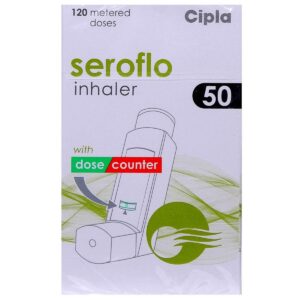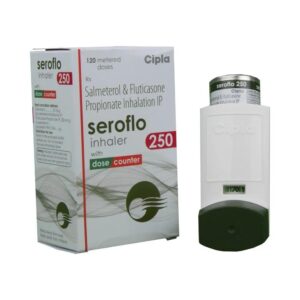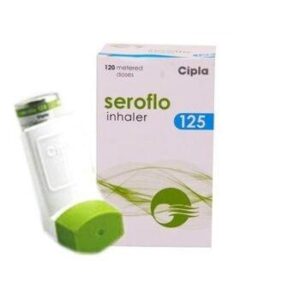FLUTICASONE + SALMETEROL
Fluticasone: Fluticasone is a corticosteroid medication that is commonly used to treat symptoms of allergic rhinitis, asthma, and certain skin conditions. It belongs to a class of drugs called glucocorticoids, which work by reducing inflammation in the body.
Fluticasone is available in various forms, including nasal sprays, inhalers, and creams. The nasal spray is primarily used to relieve symptoms of seasonal and perennial allergic rhinitis, such as a runny or stuffy nose, sneezing, and itching. It can also help reduce nasal congestion caused by certain non-allergic conditions.
When used as an inhaler, fluticasone is an effective long-term maintenance therapy for asthma. It helps to control and prevent symptoms such as wheezing, shortness of breath, and chest tightness. It is not intended for immediate relief of acute asthma attacks.
Topical forms of fluticasone, such as creams or ointments, are used to treat various skin conditions, including eczema, psoriasis, and dermatitis. They work by reducing itching, redness, and inflammation on the skin.
The recommended dosage and frequency of fluticasone depends on the specific form and indication. It is important to follow the instructions provided by the healthcare professional or medication label.
Like any medication, fluticasone can cause certain side effects. The most common side effects associated with nasal use include nasal irritation, nosebleeds, sore throat, headache, and nasal dryness. In some cases, it may also cause a slight increase in blood pressure or eye problems like glaucoma or cataracts.
When used as an inhaler, side effects may include throat irritation, cough, hoarseness, fungal infections in the mouth, and a decrease in bone mineral density with long-term use.
When applied topically, side effects may include skin irritation, burning, itching, or redness at the site of application. In rare cases, it may cause skin thinning or discoloration.
It is important to consult with a healthcare professional before starting fluticasone, as they can provide personalized advice and guidance based on individual needs and medical history.
Salmeterol: Salmeterol is a long-acting beta-agonist drug used for the management of asthma and chronic obstructive pulmonary disease (COPD). It is marketed under various brand names, such as Serevent and Serevent Diskus.
The primary mechanism of action of Salmeterol is its ability to selectively stimulate beta-2 adrenergic receptors in the smooth muscle of the airways. This stimulation results in bronchodilation, leading to the relaxation of the airway muscles and improved airflow. Salmeterol provides a sustained bronchodilating effect, with a duration of action of approximately 12 hours.
It is usually administered through an inhaler device. The recommended dose for asthma is typically 50 mcg twice daily, while for COPD, the usual dose is 50 mcg twice daily, although higher doses may be prescribed in severe cases. It should be used as a maintenance treatment and not as a rescue medication for acute symptoms.
Like any medication, Salmeterol can cause side effects. The most common side effects include headache, throat irritation, tremors, nervousness, cough, runny or stuffy nose. Serious side effects are infrequent but can include an increased risk of asthma-related death, paradoxical bronchospasm (sudden narrowing of the airways), cardiovascular effects such as hypertension and arrhythmias, and allergic reactions. It is important to discuss any concerns or side effects with a healthcare provider.



